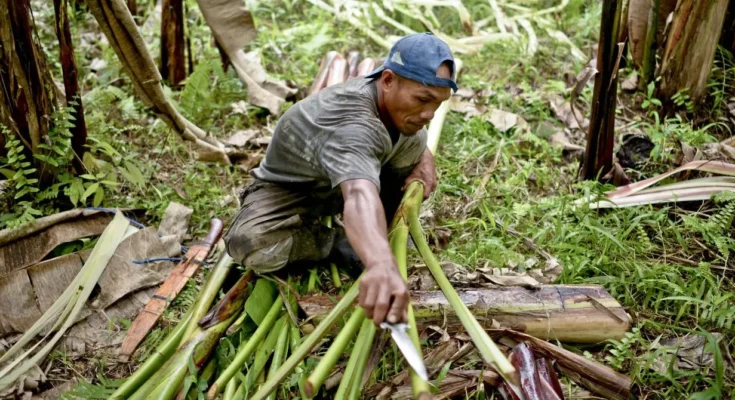The Philippines remains the world’s largest producer of abaca fibers, supplying about 87% of global demand. Abaca is a versatile natural fiber used in products like cordage, specialty papers (e.g., currency notes and tea bags), textiles, furniture, handicrafts, grocery bags, meat casings, automotive composites, and cosmetics. Its eco-friendly properties make it a key material in industries advocating for sustainability.
Economic Contributions

The Philippine abaca industry generates an annual average of ₱4.7 billion in export earnings, making it a significant contributor to the country’s economy.
- Production Areas: Abaca is cultivated across 176,549 hectares of farmland, primarily in the Visayas and Mindanao regions.
- Farmers Involved: Over 122,758 farmers depend on abaca for their livelihoods.
Ecological Advantages

Abaca’s benefits extend beyond economics, offering significant environmental advantages:
- Reforestation and Biodiversity:
- Abaca thrives in intercropping systems with coconut palms and native tree species.
- Planting abaca can help restore biodiversity in degraded lands, including former monoculture plantations.
- Erosion Control and Flood Prevention:
- Abaca’s roots improve the water-holding capacity of soil, minimizing erosion, landslides, and sedimentation in coastal areas that serve as fish breeding grounds.
- Sustainable Farming:
- Abaca requires less land and fewer resources to cultivate compared to other crops.
- Waste materials from abaca production are repurposed as organic fertilizers.
Global Demand and Applications
The rising demand for sustainable materials has driven global interest in abaca.
- Green Advocacy: Many industries, especially in Europe and the US, are transitioning to natural, biodegradable materials like abaca in place of plastics and synthetic fibers.
- High Versatility: Abaca’s tensile strength and flexibility make it a preferred material for:
- Specialty papers: Banknotes, tea bags, and coffee filters.
- Industrial applications: Car composites and construction materials.
- Textiles and handicrafts: Durable, eco-friendly fabrics.



Abaca Farming and Deforestation
- Short Cultivation Cycle: Abaca plants are ready for harvest within two years of planting, allowing farmers to produce renewable materials repeatedly without extensive deforestation.
- Carbon Reduction: Increased use of abaca in paper manufacturing can help reduce the global reliance on tree-based paper, addressing deforestation concerns.
- Specialty papers: About 80% of abaca fiber is used to make specialty papers like banknotes, tea bags, and coffee filters. Abaca’s strength, fineness, and length make it ideal for producing lightweight, porous papers with high tensile, burst, and tear strengths.
- Ropes and cordage: Abaca’s strength and durability underwater make it a good choice for ropes, fishing lines, and other marine tools.
- Textiles: Abaca fiber is used to make fabrics for clothing, hats, shoes, and more.
- Handicrafts: Abaca fiber is used for fiber crafts like baskets and wallets.
- Other products: Abaca fiber is also used for roofing, sausage casings, pill coatings, surgical masks, telephones, orthopedic joint replacements, and fracture-healing implants.



